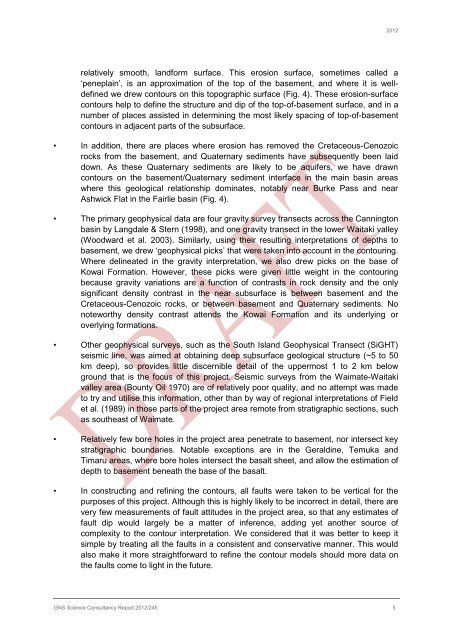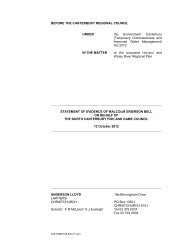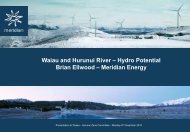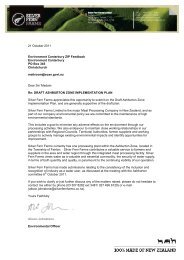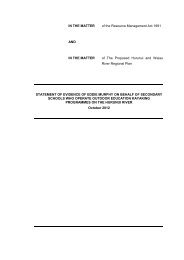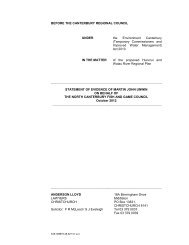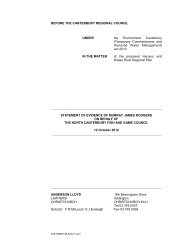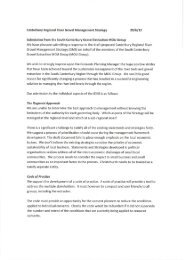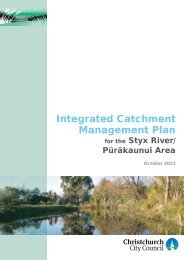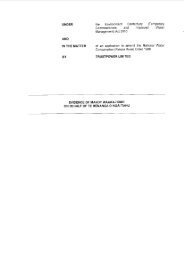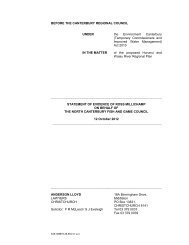Geological contours for groundwater modelling, South Canterbury
Geological contours for groundwater modelling, South Canterbury
Geological contours for groundwater modelling, South Canterbury
Create successful ePaper yourself
Turn your PDF publications into a flip-book with our unique Google optimized e-Paper software.
2012relatively smooth, land<strong>for</strong>m surface. This erosion surface, sometimes called a‘peneplain’, is an approximation of the top of the basement, and where it is welldefinedwe drew <strong>contours</strong> on this topographic surface (Fig. 4). These erosion-surface<strong>contours</strong> help to define the structure and dip of the top-of-basement surface, and in anumber of places assisted in determining the most likely spacing of top-of-basement<strong>contours</strong> in adjacent parts of the subsurface.• In addition, there are places where erosion has removed the Cretaceous-Cenozoicrocks from the basement, and Quaternary sediments have subsequently been laiddown. As these Quaternary sediments are likely to be aquifers, we have drawn<strong>contours</strong> on the basement/Quaternary sediment interface in the main basin areaswhere this geological relationship dominates, notably near Burke Pass and nearAshwick Flat in the Fairlie basin (Fig. 4).• The primary geophysical data are four gravity survey transects across the Canningtonbasin by Langdale & Stern (1998), and one gravity transect in the lower Waitaki valley(Woodward et al. 2003). Similarly, using their resulting interpretations of depths tobasement, we drew ‘geophysical picks’ that were taken into account in the contouring.Where delineated in the gravity interpretation, we also drew picks on the base ofKowai Formation. However, these picks were given little weight in the contouringbecause gravity variations are a function of contrasts in rock density and the onlysignificant density contrast in the near subsurface is between basement and theCretaceous-Cenozoic rocks, or between basement and Quaternary sediments. Nonoteworthy density contrast attends the Kowai Formation and its underlying oroverlying <strong>for</strong>mations.• Other geophysical surveys, such as the <strong>South</strong> Island Geophysical Transect (SiGHT)seismic line, was aimed at obtaining deep subsurface geological structure (~5 to 50km deep), so provides little discernible detail of the uppermost 1 to 2 km belowground that is the focus of this project. Seismic surveys from the Waimate-Waitakivalley area (Bounty Oil 1970) are of relatively poor quality, and no attempt was madeto try and utilise this in<strong>for</strong>mation, other than by way of regional interpretations of Fieldet al. (1989) in those parts of the project area remote from stratigraphic sections, suchas southeast of Waimate.• Relatively few bore holes in the project area penetrate to basement, nor intersect keystratigraphic boundaries. Notable exceptions are in the Geraldine, Temuka andTimaru areas, where bore holes intersect the basalt sheet, and allow the estimation ofdepth to basement beneath the base of the basalt.• In constructing and refining the <strong>contours</strong>, all faults were taken to be vertical <strong>for</strong> thepurposes of this project. Although this is highly likely to be incorrect in detail, there arevery few measurements of fault attitudes in the project area, so that any estimates offault dip would largely be a matter of inference, adding yet another source ofcomplexity to the contour interpretation. We considered that it was better to keep itsimple by treating all the faults in a consistent and conservative manner. This wouldalso make it more straight<strong>for</strong>ward to refine the contour models should more data onthe faults come to light in the future.GNS Science Consultancy Report 2012/245 5


